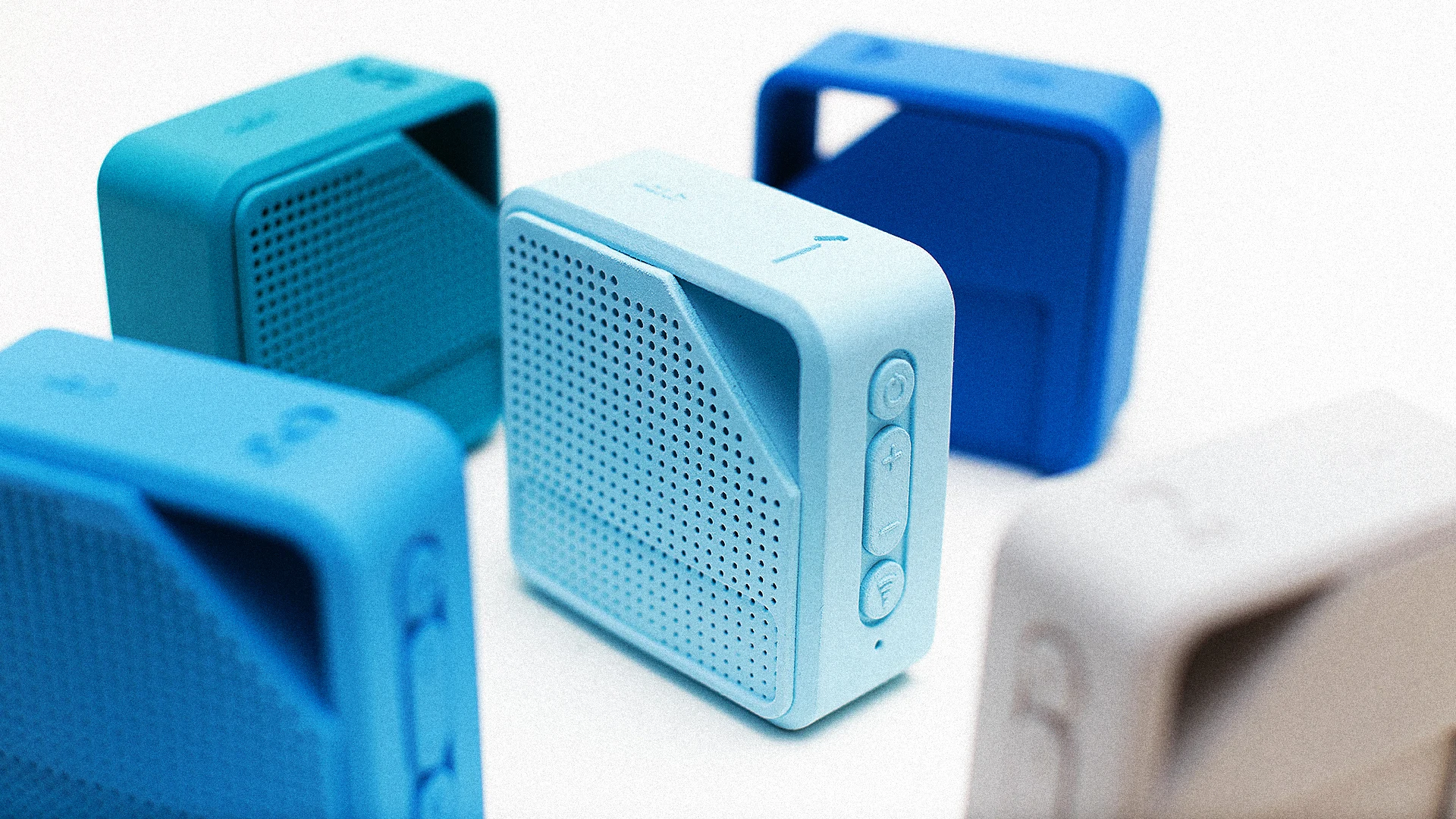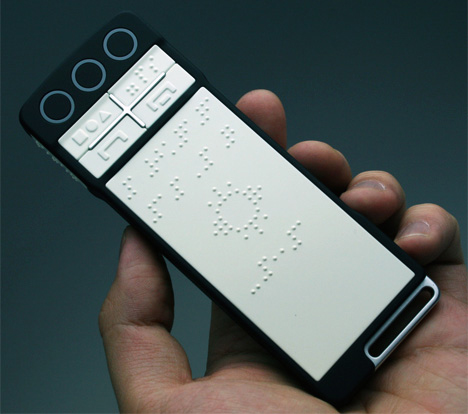Screen Readers for the Blind: Accessing Content Without Barriers
Screen Readers for the Blind: Accessing Content Without Barriers
Blog Article
Discover Cutting-edge Devices Created for the Aesthetically Impaired
The growth of ingenious devices for the visually impaired stands for a significant development in accessibility and independence. Technologies such as smart glasses with AI capacities and mobile applications created to offer auditory summaries are improving everyday experiences for users. In addition, wearable gadgets that employ haptic comments improve environmental awareness, while contemporary Braille advancements offer brand-new methods to involve with text. As these devices continue to advance, their influence on the lives of those with aesthetic impairments increases essential inquiries regarding the future of inclusivity and autonomy in different facets of life. What lies in advance in this technological landscape?
Smart Glasses for Navigation

Smart glasses created for navigation are revolutionizing the way aesthetically impaired individuals connect with their atmosphere. These advanced tools make use of a combination of camera modern technology, expert system, and auditory comments to provide real-time details regarding surroundings. By utilizing obstacle discovery systems, clever glasses can inform users to prospective hazards, making it possible for more secure wheelchair in both unfamiliar and familiar settings.
The integration of GPS modern technology even more boosts navigation capacities, enabling users to get acoustic directions as they relocate. This hands-free strategy not just fosters self-reliance however likewise encourages aesthetically impaired people to navigate metropolitan landscapes with raised confidence. Furthermore, numerous clever glasses are geared up with attributes that identify sites and road signs, offering contextual details that boosts the user experience.
Moreover, the development of these devices is consistently advancing, with business functioning to boost the precision of item acknowledgment and broaden the variety of navigational functions. As smart glasses become extra inexpensive and available, they hold the prospective to dramatically transform life for visually impaired users. Eventually, these ingenious tools represent an important action towards inclusivity, offering improved wheelchair and a higher sense of autonomy for people browsing the world around them.

Mobile Application for Daily Living
Exactly how can mobile applications improve the day-to-days live of aesthetically damaged individuals? Mobile applications are transforming the means aesthetically impaired users navigate their settings, handle day-to-day jobs, and gain access to information. These applications give important assistance through numerous capabilities, cultivating self-reliance and enhancing lifestyle.
Numerous ingenious mobile apps are made particularly for daily living. For example, apps like Be My Eyes link aesthetically impaired users with sighted volunteers using video telephone calls, permitting them to get real-time assistance with jobs such as reading labels or navigating strange areas. Likewise, Seeing AI, created by Microsoft, makes use of expert system to describe environments, checked out text, and recognize objects, properly changing a smart device right into an effective device for daily assistance.
In addition, navigating apps customized for the aesthetically impaired, such as Aira and BlindSquare, offer audio-based instructions and ecological information, allowing customers to traverse their environments safely and with confidence. Beyond navigation and instant help, mobile apps additionally support company and task management, with attributes that assist customers establish reminders, develop to-do listings, and track appointments. In summary, mobile applications offer as indispensable sources, empowering aesthetically impaired individuals to lead more independent and meeting lives.
Wearable Technologies for Support
Empowerment via innovation is increasingly obvious in the realm of wearable devices made to aid visually damaged people. These innovative devices incorporate effortlessly into every day life, boosting navigation and supplying important comments to users. For example, wise glasses geared up with electronic cameras can check out and recognize faces text out loud, allowing users to engage even more with confidence in specialist and social settings.
An additional noteworthy innovation is making use of haptic feedback systems in wearable tools. These systems utilize vibrations or other tactile signals to communicate info regarding the customer's atmosphere, such as challenges or adjustments in surface, boosting flexibility and safety and security. Wearable innovations likewise consist of wristbands that link to mobile phones, informing individuals to notices with refined resonances, thus boosting connection without dependence on aesthetic hints.
As these innovations remain to progress, they are not only improving independence for visually damaged individuals but also fostering a More about the author better feeling of addition in society. By bridging the void between challenges encountered in day-to-day living and the capacity for autonomy, wearable modern technologies function as pivotal devices in the mission for equality and empowerment for those with aesthetic problems.
Audio Description Tools
Sound description tools play an important role in enhancing access for visually damaged individuals, providing them with the capacity to engage with visual media. Braille displays and notetakers. These devices use narrated descriptions of crucial visual aspects in films, tv shows, and live efficiencies, making certain that customers can fully understand the context and emotions communicated through visuals
Audio summary can be integrated into different systems, consisting of streaming solutions, movie theater screenings, and live cinema. Many prominent streaming solutions currently include audio description as an accessibility function, enabling visitors to select it easily. In enhancement to mainstream media, specialized applications additionally exist, offering audio summaries for art events, museums, and various other social events.
The efficiency of audio summary depends upon the skill of the narrators, that should share aesthetic details succinctly without interfering with the initial sound. Advancements in this area are additionally paving the method for more personalized experiences, where users can change the degree of information and pacing according to their choices.
Braille Innovations and Devices
Braille devices and developments have actually considerably changed the means aesthetically impaired individuals connect with message and information. Modern developments have led to the development of flexible tools that enhance proficiency and self-reliance among users.
Moreover, mobile Braille notetakers integrate standard Braille input with modern-day functionalities, assisting in note-taking, organizing, and document modifying on the go. AI-powered visual aids. These small gadgets typically feature text-to-speech capacities, linking the void in between Braille and acoustic details
In enhancement, ingenious Braille printers have emerged, enabling users to produce Braille tags, records, and academic materials efficiently. This availability cultivates vision check better engagement in instructional and expert atmospheres, eventually promoting inclusivity.
Moreover, research study into smart Braille modern technologies proceeds to expand. Tools that incorporate synthetic intelligence are being discovered to give real-time navigating assistance and contextual details, improving the user experience in varied settings. Generally, these technologies mirror a commitment to equipping aesthetically impaired people via innovation, guaranteeing they can easily accessibility and involve with the globe around them.

Verdict
The innovation of cutting-edge devices for the aesthetically impaired substantially boosts self-reliance and high quality of life. Smart glasses, mobile applications, wearable innovations, audio description devices, and Braille technologies jointly empower people by giving necessary navigation support, ecological recognition, and enhanced analysis experiences. These modern technologies not just foster greater incorporation however also advertise freedom in day-to-day activities, inevitably contributing to an extra obtainable and equitable society for aesthetically impaired individuals. Proceeded advancement in this field holds assurance for additional enhancements.
As wise glasses become extra budget-friendly and accessible, they hold the prospective to dramatically transform daily life for aesthetically impaired users. Mobile applications are revolutionizing the way visually damaged helpful site users navigate their atmospheres, take care of day-to-day tasks, and gain access to info. Applications like Be My Eyes attach aesthetically damaged users with sighted volunteers by means of video clip telephone calls, permitting them to receive real-time support with tasks such as checking out labels or browsing unfamiliar spaces.Additionally, navigation apps tailored for the visually impaired, such as Aira and BlindSquare, offer audio-based instructions and ecological info, enabling users to traverse their surroundings safely and confidently.The development of innovative tools for the visually impaired dramatically boosts freedom and top quality of life.
Report this page